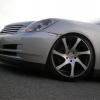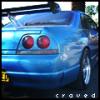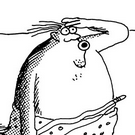Replacing your pushrod tube oil seals in your LS1 V8 (a must read)
Announcements
-
Similar Content
-
Latest Posts
-
By soviet_merlin · Posted
Are you going to be at WTAC this year @bcozican? Just realised it's coming up end of August so not long to go at all. https://www.worldtimeattack.com/ -
I just replaced the timing belt, along with tensioner, idler, water pump, etc. all the front end engine stuff with all new stock Nissan parts on my 98 R34 GTT that I just recently got, so glad I did as the belt ,tensor, idler and water pump were all original to the car and looked absolutely terrible, honestly I cant believe the belt has not broken, luckily I have not driving the vehicle since I got it, and only have ran a few times. I turned engine over by hand and lined up all the timing marks from cams, to the head (plate behind pulleys), and crank to oil pump block mark, as ran fine, but had a lot of front end noise. the idler sounded like gravel and the tensioner had to no tensor left on it at all as it appeared the spring had rusted in place due to a waterpump leak over the years. so the timing belt was very loose on the left or tensioner side. Never the less I turn engine by hand until everything lined up even with the marks on the original belt. I remove everything making sure not to rotate anything, then put in new tensioner, idler, made sure all marks from belt matched marks on the pulleys, cams and crank alike and all marks from crank and cams to head and block were perfect. I slowly turned by hand and everything lined up on the cams and crank to the head and block every other time, as proper. all looked fine until I put the lower timing belt cover back on, then the harmonic balancer, at this point before torqueing the crank bolt down I noticed the timing mark on the lower cover to the harmonic balancer is off. I think the marks on the harmonic balancer and in 5 degrees, from 0-20 and it should be at 0, but some how its around -2.5, not enough for a belt notch, and there is little play in this cover to the block. The key way and key are perfect on the crank and slot in balancer is perfect, no play here, and the cams and other timing marks seem to be on. Is this something to be concerned with or will it be fine. maybe just this way due to a new stock Nissan belt?? slightly tight and will strength a hair??? I marked the CAS before disassembly and know it should be set to 15 degrees BTDC or so at 650 rpms per engine decal. so do I need to worry about what appears to be a slight retard of the mechanical timing? or will this slight difference be compensated when I adjust my CAS? appreciate any insight.
-
Entries updated to public
-
Nah. I reckon that that is the HICAS CU. Just the large plug, PS specific and other I/O. I can't see that there'd be a need/want for the (non-HICAS) PS CU to be watching any of those inputs other than the speed sensor.
-
Is there coolant flow to (through) the IACV?
-






Recommended Posts
Create an account or sign in to comment
You need to be a member in order to leave a comment
Create an account
Sign up for a new account in our community. It's easy!
Register a new accountSign in
Already have an account? Sign in here.
Sign In Now